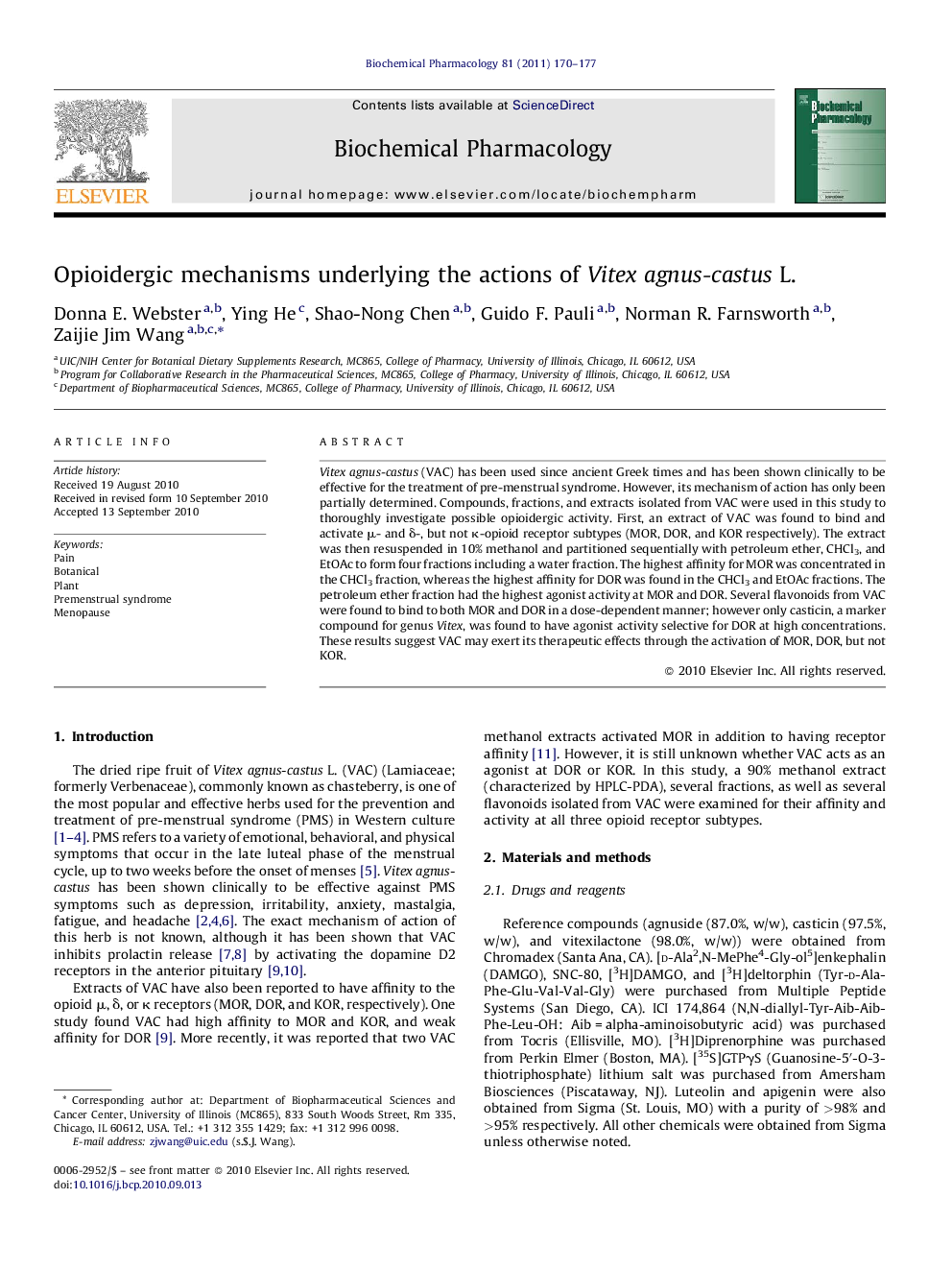| Article ID | Journal | Published Year | Pages | File Type |
|---|---|---|---|---|
| 2513068 | Biochemical Pharmacology | 2011 | 8 Pages |
Vitex agnus-castus (VAC) has been used since ancient Greek times and has been shown clinically to be effective for the treatment of pre-menstrual syndrome. However, its mechanism of action has only been partially determined. Compounds, fractions, and extracts isolated from VAC were used in this study to thoroughly investigate possible opioidergic activity. First, an extract of VAC was found to bind and activate μ- and δ-, but not κ-opioid receptor subtypes (MOR, DOR, and KOR respectively). The extract was then resuspended in 10% methanol and partitioned sequentially with petroleum ether, CHCl3, and EtOAc to form four fractions including a water fraction. The highest affinity for MOR was concentrated in the CHCl3 fraction, whereas the highest affinity for DOR was found in the CHCl3 and EtOAc fractions. The petroleum ether fraction had the highest agonist activity at MOR and DOR. Several flavonoids from VAC were found to bind to both MOR and DOR in a dose-dependent manner; however only casticin, a marker compound for genus Vitex, was found to have agonist activity selective for DOR at high concentrations. These results suggest VAC may exert its therapeutic effects through the activation of MOR, DOR, but not KOR.
Graphical abstractFigure optionsDownload full-size imageDownload as PowerPoint slide
